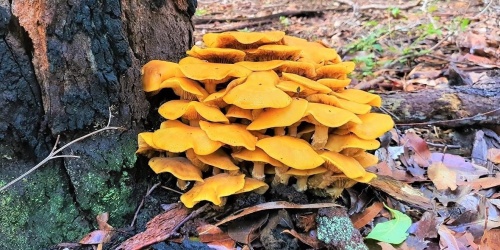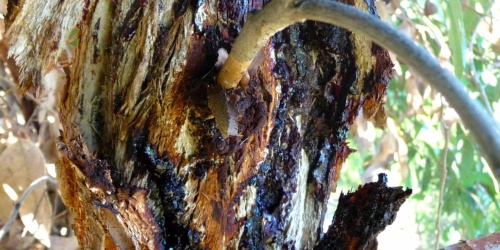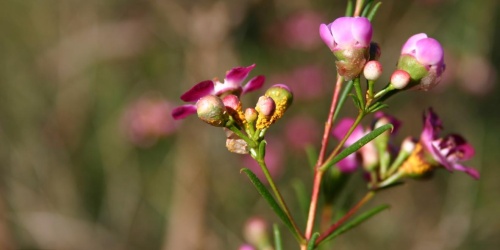
Banksia cuneata. Photo by Andrew Crawford/DBCA
Reducing the impacts of plant diseases
In the south-west of Western Australia, Phytophthora dieback (dieback) contributes directly and indirectly to the threatened status of many species of plants. The direct threat is due to individual plant species being susceptible to infection and death by Phytophthora, particularly Phytophthora cinnamomi. The indirect threat comes from the impacts on plant communities bought on by the disappearance of dieback-susceptible species. These impacts can include:
- a reduction in biomass leading to less shade for other plants;
- changing the hydrology of the site; and
- making the site more prone to weed invasion.
The primary tools used by the department to protect such vulnerable communities and species are access control and hygiene - preventing the introduction or spread of Phytophthora dieback into the area in the first instance. Phytophthora has means of spreading of its own accord, so when the disease does start invading one of these communities, we need to look to other tools to reduce the impact on individual plants, communities and species.
In the eastern states where Myrtle rust has spread rapidly since accidental introduction to Australia in 2010, a number of previously common and widespread myrtaceous plant species are now regarded as 'threatened' due to the severe impact of the disease.
Translocation and seed conservation offer a means of protecting plant species and communities under imminent threat from Phytophthoras or other plant diseases by establishing new populations where the disease doesn't occur or preserving seed for this purpose in the future.

Translocation
Translocation refers to the deliberate transferal of plants material from one area to another. Translocation is used by the department as a conservation tool when a plant species faces a high risk of extinction in the wild in the near to immediate future without intervention.
Translocated plants may be sourced from seeds or cuttings selected from the remaining populations in the wild, or seed from the department’s Threatened Flora Seed Centre. New plants are grown for translocation by germinating seed in the Threatened Flora Seed Centre Laboratory. These new plants are then grown in the nursery at the Botanic Gardens and Parks Authority in conditions that ensure no weeds, pests or diseases are translocated with the plants.

Seed conservation
Seed conservation is an efficient and cost-effective method of conserving species. Seeds are portable and can be conserved at a number of sites, reducing their vulnerability to loss. Seed conservation efforts within the department are targeted at species most at risk in the wild. Where habitats are in immediate danger of destruction due to threats such as Phytophthora dieback, seed collection and conservation becomes necessary to ensure the survival of the species and its genetic variation. Collected seed is stored in conditions that aim to keep the seed safe and viable. Stored seed can be used in the future to help reintroduce species to the wild or restock depleted populations.
The department's Threatened Flora Seed Centre and the WA Seed Centre Kings Park are engaged in the collection and conservation of seed respectively from threatened and common myrtaceous plant species that may be impacted by Myrtle rust if it arrives and becomes established in Western Australia.


